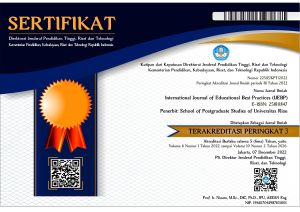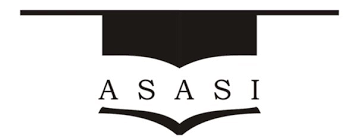PREFERED TEACHING METHODOLOGY USED BY UNIVERSITY LECTURERS IN TEACHING EFL READING IN RIAU
DOI:
https://doi.org/10.31258/ijebp.2.1.14-25Keywords:
Preferred Teaching Methodology, University Lecturers, Teaching EFL ReadingAbstract
Teachers and lecturers still play significant roles in guiding their learners in EFL classes in achieving academic success during their study and these educators may become exemplary to foster their learners’ reading habit so they discern reading any types of texts needed, This research objective is to investigate the types of EFL teaching methodologies in teaching reading frequently used by all lecturers teaching both at public and private universities in Riau. There were three methodologies were studied: Audio Lingual and Grammar Translation Methods (traditional or lecturers’ centered) and Communicative Language teaching (as learners’ centered).
This study implemented a quantitative research design using 5-Likert Scale questionnaire and 97 respondents were involved in the research. The data were analysed by using descriptive statistics (measuring percentage, standard deviation, mean, and overall mean scores) and inferential statistics (independent t-test and one-way MANOVA). The research has revealed that CLT tended to be used more than AL and GTM. This implied that both public and private universities in Riau preferred using the CLT method. From the quantitative research findings, it showed that lecturers aged between 30 and 40 years old felt more confident in their use of this method compared to other age groups.
References
Arifudin Hamra and Eny Syatriana. (2012). A Model of Reading Teaching for University EFL Students: Need analysis and model design. English Language Teaching. vol.5, No.10
Brown, D. H. (2001). Teaching by Principles. USA: Pearson Education, Inc Ellis, R. (1990). Classroom second Language Development: a study of classroom interaction and language acquisition. Oxford. Pergamon Press.
Grellet, F. (1988). Developing Reading Skills: A Practical Guide to Reading Comprehension Exercises. Cambridge. Cambridge University Press.
Intarapanich. (2013). Procedia – Social and Behavioral Sciences. vol.88, pp. 306-3011 Kompas newspaper, 22 February 2016
Larsen-Freeman, D. (2000). Techniques and Principles in Language Teaching. Oxford. Oxford University Press
Krashen, S. D. (1991). Fundamentals of Language Education. USA. Laredo Publishing Company
Mappiasse S. S. and Sihes A. J. (2014). English Language Teaching, vol.7, No. 10. Evaluation of English as a Foreign Language and its Curriculum in Indonesia: a review.
Mitchell, R. and Myles, F. (2004). Second Language Learning Theories (2nd ed.). UK. Edition .Arnold Publication.
Nunan, D. (1991). Language Teaching Methodology: a Textbook for Teachers. London. Prentice Hall International, Ltd.
Nunan, D. (1992). Research methods in language learning. New York. Cambridge University Press.
Richards, j. C. & Rodgers, T. S. (1986). Approaches and methods in language teaching: A description and analysis. Cambridge. Cambridge University Press.
Safiah, Osman. (1992). Promoting cultural awareness and undersanding through reading
focus in the Malaysian classroom. In: Jamaliah Mohd Ali (ed.) Proceedings in Literacy in Asian societies, 3: 21-29.
Smith, F. (1985). Reading Without Nonsense. (2nd ed.). New York. Teachers College Press.
Sunggingwati, D & Nguyen, H.T.M. (2013). Electronic Journal of Foreign Language Teaching vol.10, No.1, pp.80-95. Center for Language Studies. National University of Singapore.
Ur, P. (1999). A Course in Language Teaching: Practice and Theory. Cambridge. Cambridge Teacher Training and Development.





